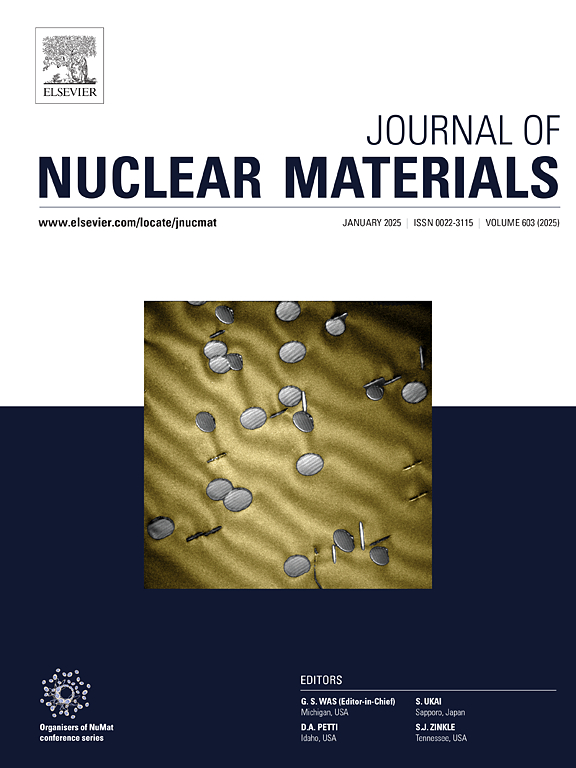Retention, sputtering and surface chemistry at tungsten oxide surface facing deuterium plasma
IF 2.8
2区 工程技术
Q3 MATERIALS SCIENCE, MULTIDISCIPLINARY
引用次数: 0
Abstract
Our study investigates the response of an oxidized tungsten surface to deuterium irradiation in the 5–120 eV impact energy range. Using the LAMMPS molecular dynamics tool and a ReaxFF force field, we analyze the retention, reflection, sputtering, and surface chemistry of oxidized layers at various thicknesses at room temperature. These layers, formed on the tungsten (001) surface through cumulative oxygen irradiation, show that most reflected D atoms and sputtered O atoms originate in the oxide ad-layer, not reaching the W-bulk. The retention probability of D atoms is notably high at the lowest energies, decreasing with energy and approaching metallic tungsten values at higher energies. Our findings, which are compared with those of metallic tungsten and existing literature, provide valuable insights into the behavior of oxidized tungsten surfaces under deuterium plasma irradiation, with potential applications in the design of plasma-facing components for fusion reactors.
求助全文
约1分钟内获得全文
求助全文
来源期刊

Journal of Nuclear Materials
工程技术-材料科学:综合
CiteScore
5.70
自引率
25.80%
发文量
601
审稿时长
63 days
期刊介绍:
The Journal of Nuclear Materials publishes high quality papers in materials research for nuclear applications, primarily fission reactors, fusion reactors, and similar environments including radiation areas of charged particle accelerators. Both original research and critical review papers covering experimental, theoretical, and computational aspects of either fundamental or applied nature are welcome.
The breadth of the field is such that a wide range of processes and properties in the field of materials science and engineering is of interest to the readership, spanning atom-scale processes, microstructures, thermodynamics, mechanical properties, physical properties, and corrosion, for example.
Topics covered by JNM
Fission reactor materials, including fuels, cladding, core structures, pressure vessels, coolant interactions with materials, moderator and control components, fission product behavior.
Materials aspects of the entire fuel cycle.
Materials aspects of the actinides and their compounds.
Performance of nuclear waste materials; materials aspects of the immobilization of wastes.
Fusion reactor materials, including first walls, blankets, insulators and magnets.
Neutron and charged particle radiation effects in materials, including defects, transmutations, microstructures, phase changes and macroscopic properties.
Interaction of plasmas, ion beams, electron beams and electromagnetic radiation with materials relevant to nuclear systems.
 求助内容:
求助内容: 应助结果提醒方式:
应助结果提醒方式:


